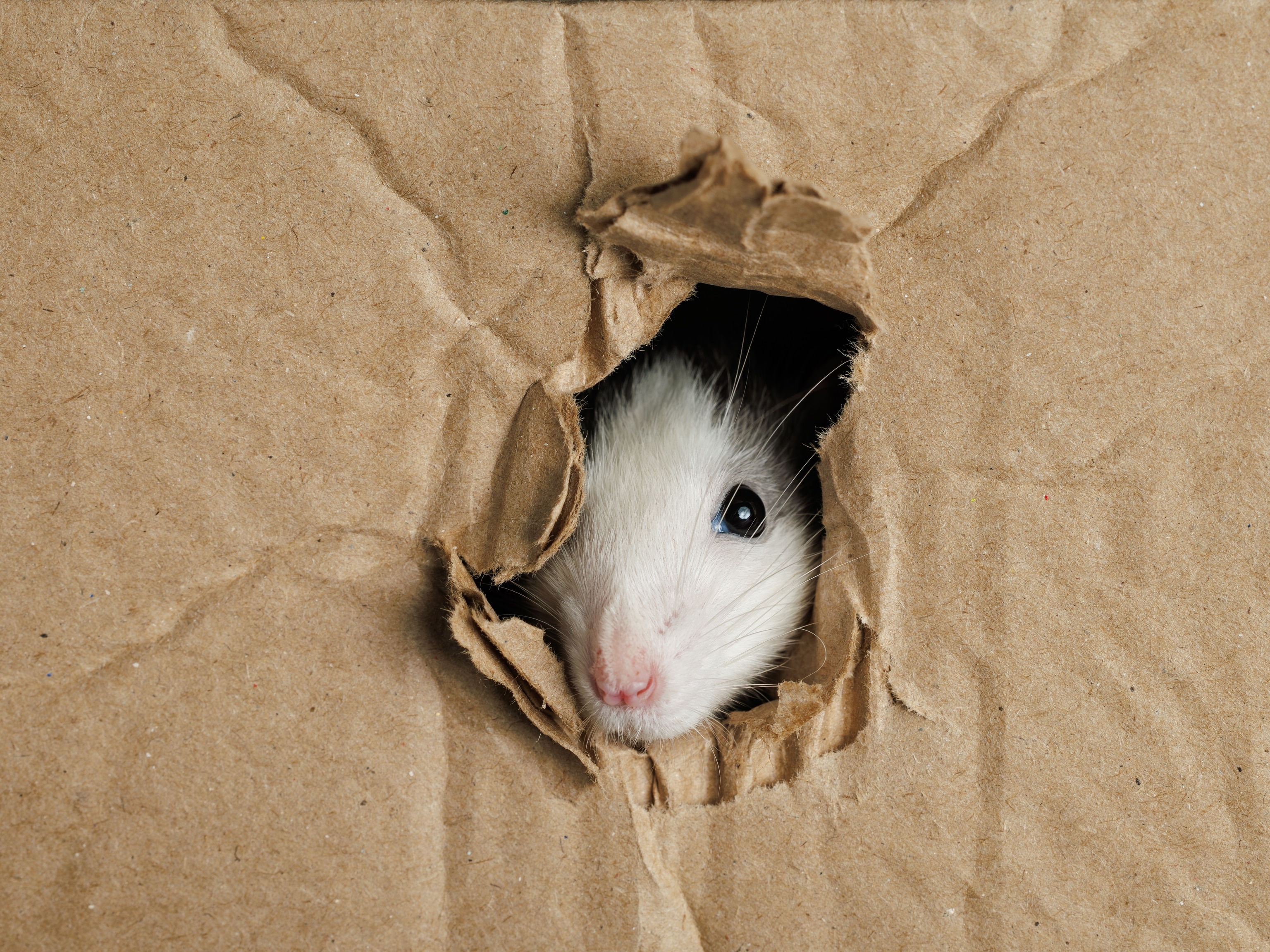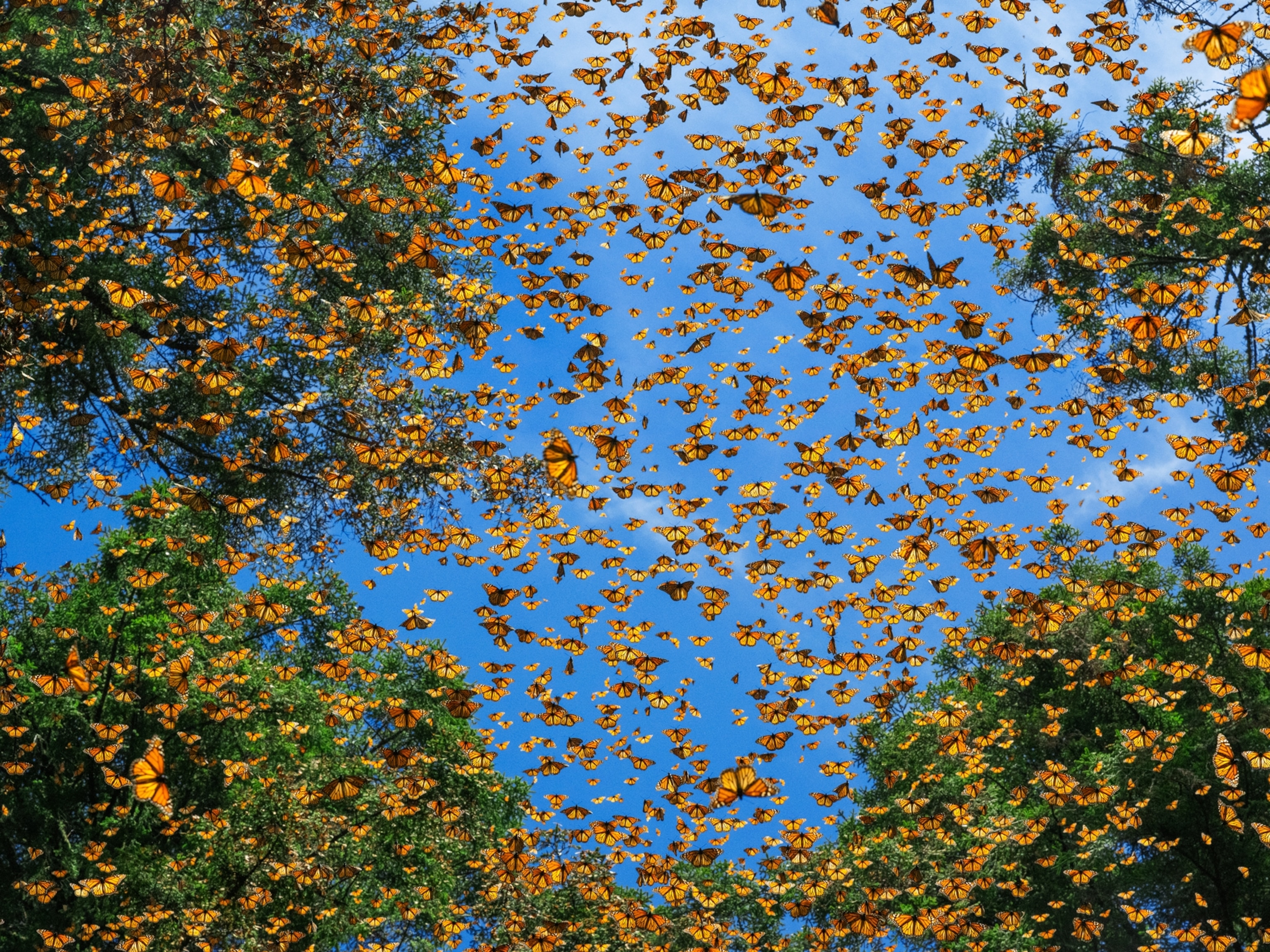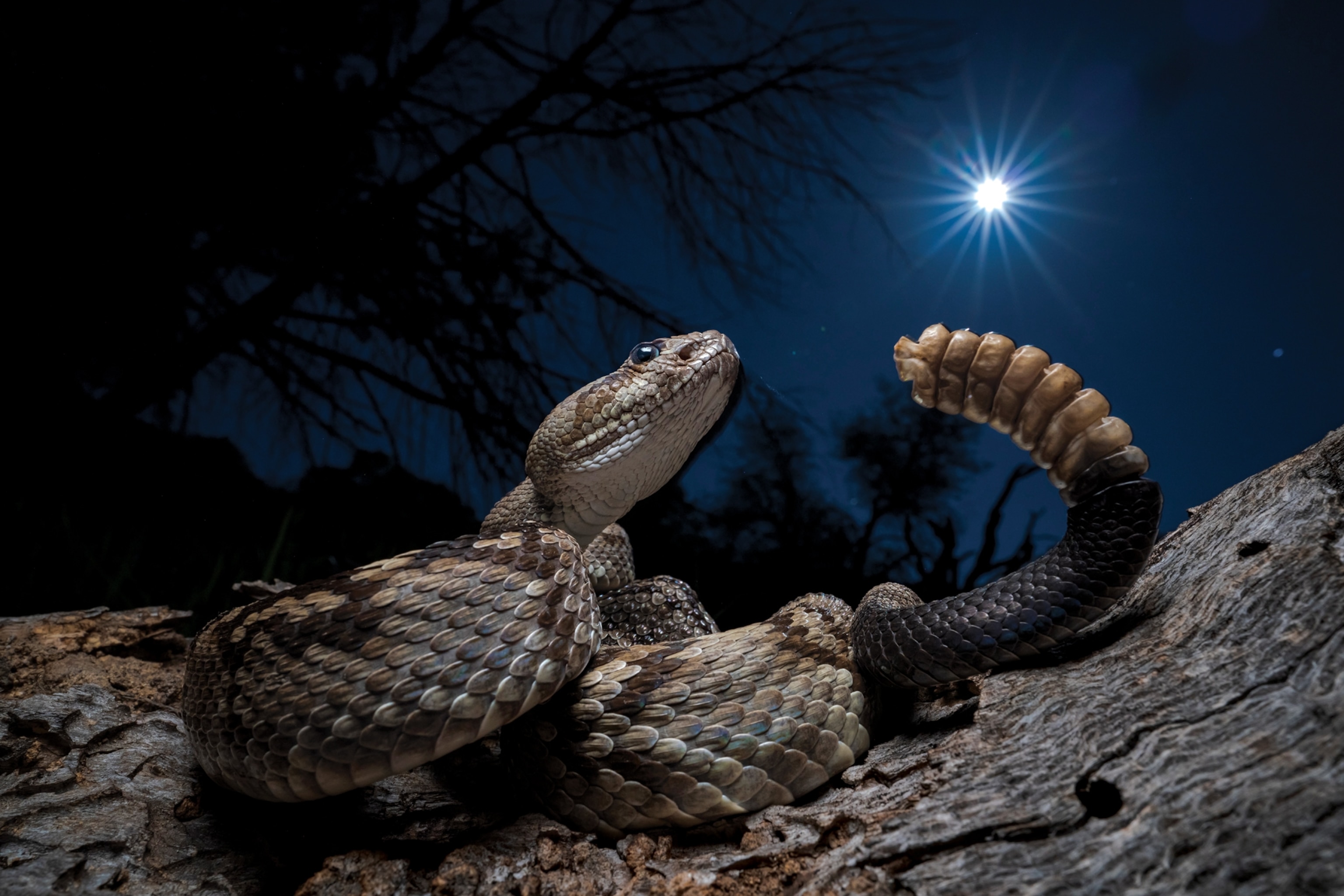
The key to protecting rattlesnakes from extinction? Clearing their name and reputation
These antiheroes of the American West are actually not so bad. New research reveals they're good parents and neighbors, and their venom may help save lives.
The night of near-continuous rattlesnakes was mellow: the temperature pleasant, the humidity low, the beer cold. Under a crescent moon, the electric golf cart rolled silently over hilly paths. When our headlights illuminated a venomous snake, National Geographic Explorer Matt Goode would hop out—a drink in his right hand, a snake stick in his left—and calmly present the creature for my inspection. Unlike the amped-up fellows on YouTube snatching hissing vipers from beneath wooden boards, Goode never shouted “Dude!”
It was early September, and the herpetologist’s field season was winding to a close. For over 20 years the University of Arizona research scientist and his students have been capturing snakes, including western diamondback rattlesnakes, tiger rattlesnakes, and black-tailed rattlesnakes. They have found more than 7,000 so far on the cart paths of Oro Valley’s Stone Canyon golf course, just north of Tucson, and on the private roads dotted with multimillion-dollar homes that surround it.
On the best nights, Goode’s team might bag up to 20 snakes. In a campus lab the next day, his students measure, sex, weigh, and mark them for recapture (using paint on their rattles and inserting tiny microchips under their skin), then return them to their site of capture. Goode’s central research question—how does the ongoing conversion of pristine desert to housing developments affect snakes?—posed something of a conservation paradox. Compared with snakes in more natural areas, the Stone Canyon ones are growing larger, producing more offspring, and expanding their ranges among the McMansions. It helps, perhaps, that most homeowners are absent during the hottest months.
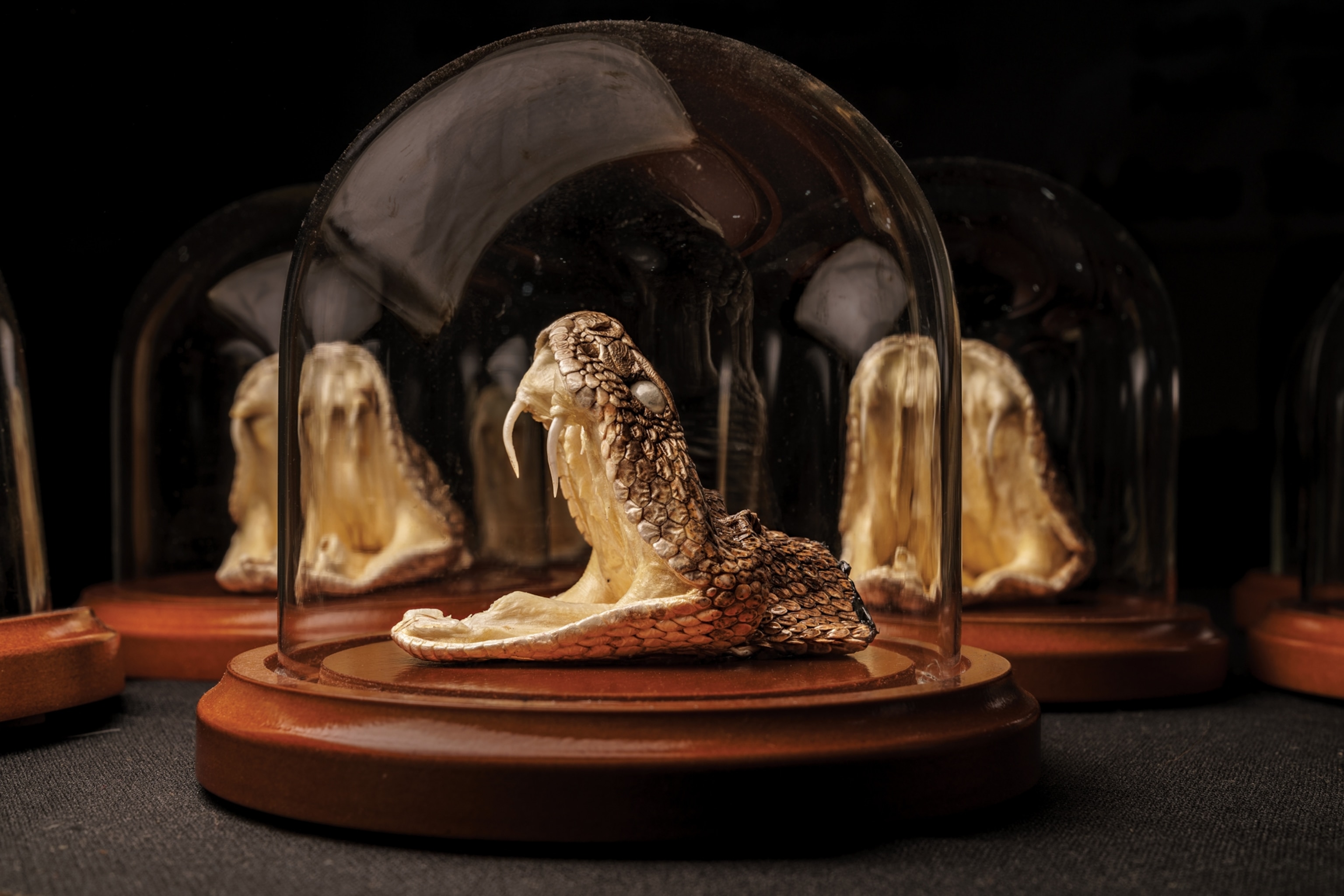
As we rolled over a bridge past an artificial waterfall, Goode exclaimed, “Look at this productivity!” Thanks to irrigation, berries and blossoms abounded, attracting primary consumers such as the silky pocket mice we saw scampering along the paths. On the lush fairways, our headlamps revealed a small herd of javelinas, members of the peccary family; in a stand of trees, a retreating mountain lion. Goode had seen bobcats here, coyotes and raccoons. Clearly, this was an Eden for snakes. They had plenty of rodents, birds, and eggs to eat, and the rocky outcrops, styled by bulldozers, provided plenty of places to hide.
Goode had placed informational signs here and there in an effort to curtail people’s baser instincts (smashing rattlesnakes with golf clubs). But the nearby roads were occasionally greasy with flattened reptiles. “You gotta ask,” Goode said with a sigh, “is this development an ecological trap? How sustainable is it? The fate of all species is tied to anthropomorphic disturbances.” A golf course could lose its water supply, for example, and half the birds could decamp. The one thing you can count on people to do, he said: Mess things up.
The snakes of Stone Canyon may be doing well, but the fate of most other rattlesnakes—more than 50 species occur exclusively throughout the Americas—is grimmer. From southwestern Canada to central Argentina, people continue to capture them for the pet or skin trade, swerve to flatten them as they warm themselves on roads, and chop up their habitat with subdivisions, pipelines, and cell towers. Timber rattlesnakes, once abundant, have been extirpated in a number of northern U.S. states and Ontario, and they’re threatened or endangered in pockets throughout their broad U.S. range. Several other species are categorized from generally threatened to critically endangered.

I got a taste of how far conservationists will go to protect Pennsylvania’s remaining timber rattlesnakes on a sunny late summer day. Sporting canvas snake gaiters, Thomas LaDuke, a herpetologist at East Stroudsburg University, picked his way along the rocky ridgeline of Hawk Mountain, a 2,600-acre reserve that’s wildly popular with birders during migration. When the brush to our right opened to a view of the valley below, we stepped off-trail.
“Look,” LaDuke said, nodding toward a rocky shelf of pink and gray conglomerate. Not 10 feet away I discerned a thick pile of yellow-and-black coils. Somewhat incredulous, I crept infinitesimally closer, anticipating the characteristic tsssss! of a tail rattle. Nothing. This snake wanted only to bask.
To my right I saw another heap of snake. “Female,” said LaDuke. “Probably pregnant.” Her head, like that of all rattlesnakes, was triangular, tapering quickly to a narrow neck. Her pupils were vertical, and the yellow-and-black chevrons down her spine looked as plush as velvet. As I stared, she slowly uncoiled—creating an uncanny illusion of moving in two directions at once—then disappeared into a crevice.
LaDuke and I continued over the ridgeline, then descended to a talus field just below the heavily traveled trail. At first I saw only rocks. Then, as before, I became aware of another reality. A coiled snake, the diameter of a fedora, on a prominent boulder. Then, six feet away, another. Scanning the boulder field, careful to move only my eyeballs, I made out six more rattlesnake piles.
Atop one, a clutch of neonates, khaki-colored with brown stripes, squirmed. Born live just yesterday, LaDuke said, they already were more than seven inches long and venomous, with hollow fangs and one tiny tail segment, called a button. Each time a rattlesnake sheds its skin—up to twice a year for adults, more often for the young—it gains another rattle segment. (The rattles often fall off, so segments don’t always reflect age.)
After a week of parental protection, behavior more often seen in mammals, the babies fend for themselves. They shed their skin for the first time, then may start following the trails of small animals such as mice and shrews, using a scent-detecting organ at the roof of their mouth known as the vomeronasal organ and heat-detecting organs inside small pits between their eyes and nostrils. They ambush their prey, inject a dose of highly toxic venom, then swallow their meal whole.

As the weather cools, young rattlesnakes follow their mother’s chemical trail back to the family’s den, or hibernaculum. They overwinter coiled with kin of all ages—including males returned from assignations with females up to two miles away—as well as with other snake species such as racers and copperheads that might at other times prey on the rattlesnake offspring. During hibernation, snakes have no interest in eating: If they can’t bask, they can’t digest.
LaDuke and his students radio-tagged and tracked timber rattlers for almost three years on Hawk Mountain, estimating their population size and pinpointing their most important hibernacula. Females, alongside newborns and subadults, spend most of their time basking, feeding, mating, and giving birth within several hundred yards of these underground lairs—and legions of bird-watching human visitors. At the time, LaDuke had recommended that the Hawk Mountain Sanctuary reroute its ridge trail to avoid this basking site, which it did. “People picnic on these rocks not knowing how close they are to snakes,” LaDuke said.
Nowadays herpetologists consider the location of dens and basking sites state-level secrets; some spend hours scouring social media, persuading enthusiasts posing with snakes to remove geotags from their Facebook and Instagram posts. “It’s great that people are interested in rattlesnakes,” LaDuke said, “but they don’t realize the magnitude of their impact on the population.”

Persuading the public to protect venomous snakes can be difficult. Rattlesnakes have both fascinated and terrified us with their ability to remain hidden and their surprisingly strong bodies, needle-sharp fangs, and toxic venom. As biologist Edward O. Wilson has written, “It pays in elementary survival to be interested in snakes.”
Humans’ relationships with rattlesnakes have always been complicated. The Hopi of the U.S. Southwest considered them messengers to the rain-giving spirits of the Earth and included rattlers in biennial rituals. The Aztec and Yucatec Maya of pre-Columbian Mesoamerica venerated rattlesnakes, linking them with rain and the planting season. According to one early 19th-century account, some western Cherokee felt an obligation to avoid killing rattlesnakes out of respect for their tightly knit family organizations. The Apache associated them with rebirth and renewal, while other Native American cultures linked them with violence and revenge.
For early European colonists, rattlesnakes—found only in the New World—symbolized virility and fearlessness. In an infamous political cartoon from 1754 that urged colonial unity, the timber rattlesnake is separated into chunks representing the original British colonies. Under the snake sit the words “JOIN, or DIE.” Later, a rattlesnake and the motto “DONT TREAD ON ME” were used on the Gadsden flag, which rallied the Continental Marines during the American Revolution. That flag, with a snake loosely coiled into a pyramid and ready to strike, has been brandished ever since by those with an anti-government gripe.
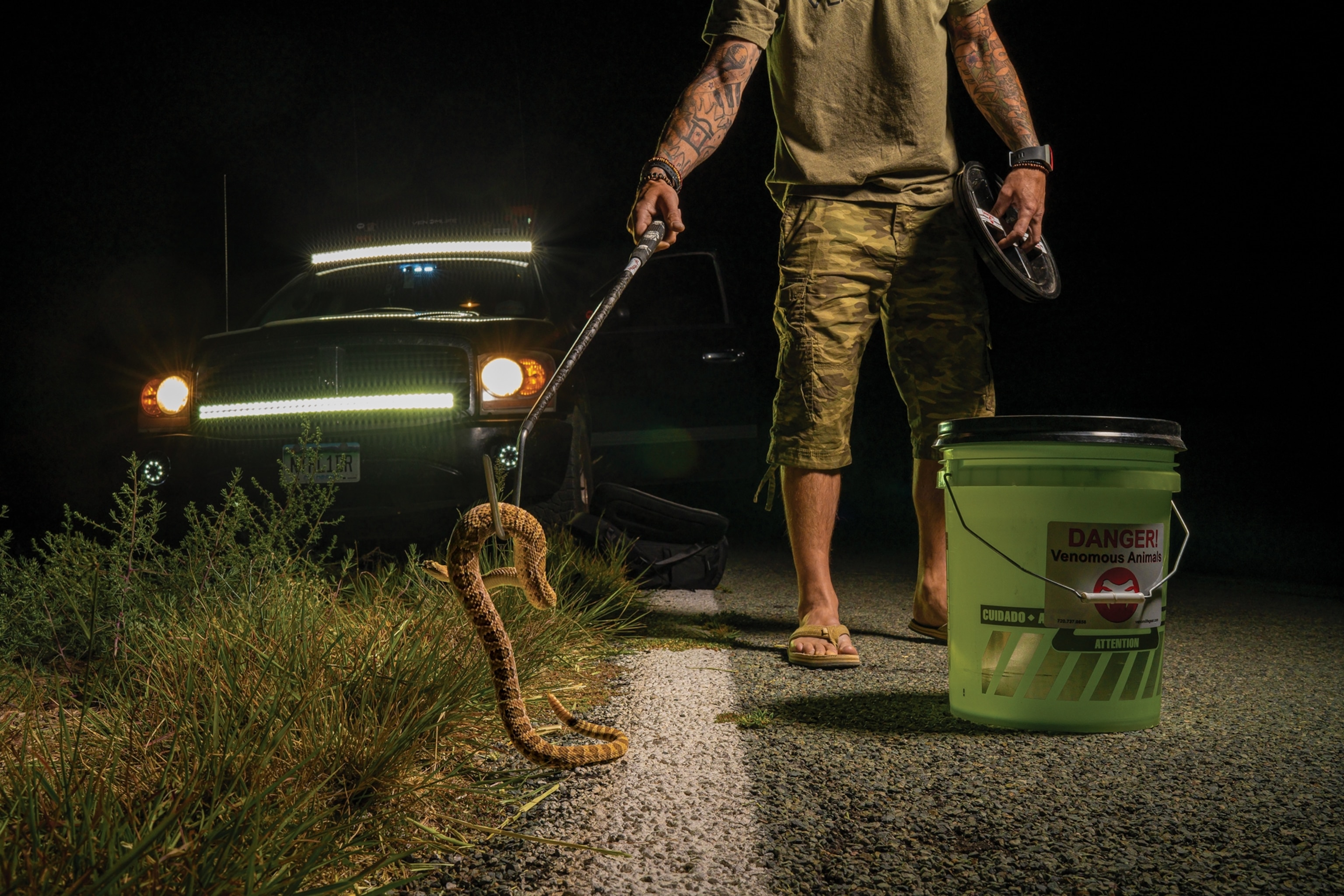
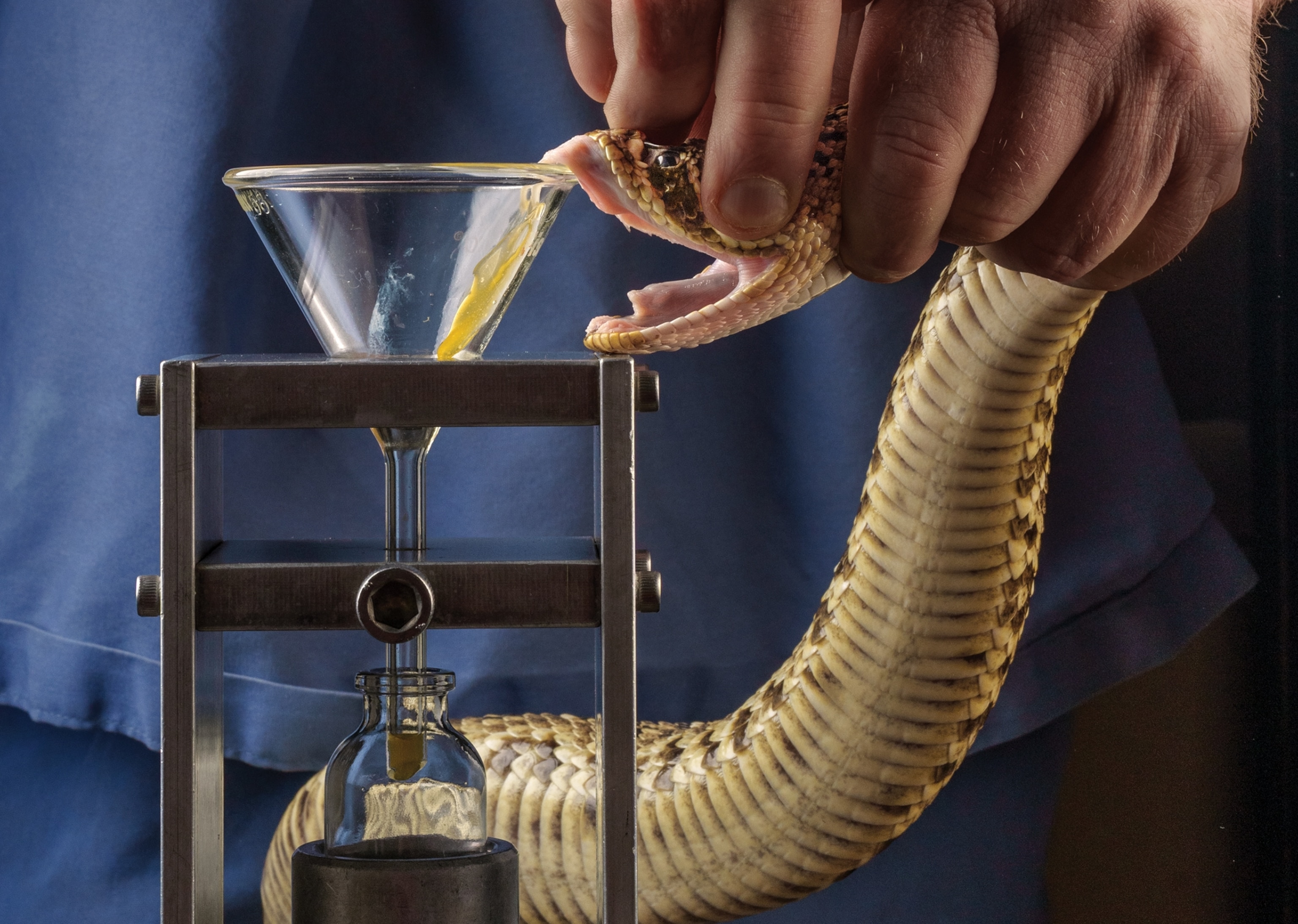

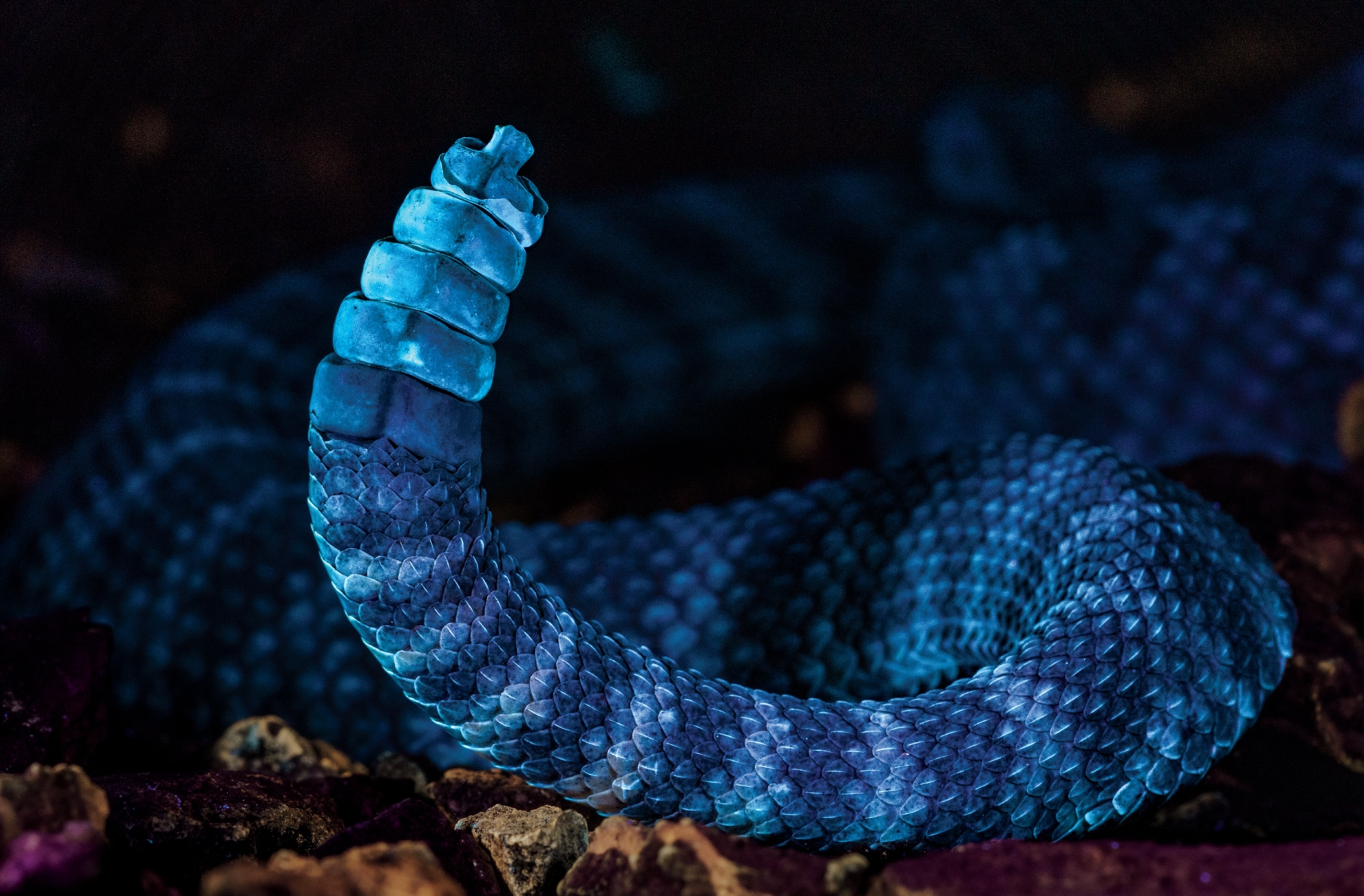
But reverence extends only so far. Through the 17th and 18th centuries, communities offered bounties for dead rattlers (a practice New York and Vermont continued into the 1970s). States organized (some still do) annual roundups that slaughtered hundreds, sometimes thousands, of snakes in the name of safety. In the cold Northeast, where hundreds of timber rattlesnakes may overwinter in a single den, their mass exits in the spring made them particularly vulnerable to wholesale extermination.
“I’m blue in the face from teaching people that snakes aren’t out to get you,” Matt Goode said as we hummed through Stone Canyon. “But I don’t know how much progress we’ve made.” Throughout much of the South and Southwest, it’s legal to kill many rattlesnake species. And some people kill a whole lot.
Sweetwater, Texas, population 10,000, has held its rattlesnake roundup annually since 1958, when hunters extracted more than 3,000 pounds of western diamondbacks from their hideaways in the nearby countryside. Sponsored by the local Jaycees, a youth leadership group, the event continues to attract tens of thousands of visitors to the Nolan County Coliseum and procures a yearly average of 5,800 pounds of live rattlesnakes. Some are collected on roadsides, but most are captured by hunters who cruise the state, busting up rocky cracks and crevices with crowbars and flushing their quarry from dens with aerosolized gasoline.
Eradication of a purported menace was the Sweetwater roundup’s founding goal—as it likely was at the nation’s 12 other roundups—but today its aim is unmistakably financial. The roundup buys snakes from hunters at a fluctuating per-pound rate. It sends most of them to the coliseum’s cookshack—where they are dropped, beer-battered, into the fry pots—and sells the rest to vendors, who’ll convert their skins into wallets, boots, purses, and trinkets.
The three-day event raises cash for local charities ($63,000 in 2023), and visitors annually inject over eight million dollars into the local economy. Karen Hunt, head of the local chamber of commerce, told a Texas newspaper that for many folks in Sweetwater, “this is Black Friday.”


This is what Black Friday is like for the snakes: Piled ankle-deep in octagonal wooden pens, they mostly remain coiled. Some rattle continuously, an indication they feel threatened (in the wild, these solitary predators may rattle just a few times in their entire lives). Many suffocate to death, and those with enough energy circle the perimeter of their pen constantly, searching for an exit. The air stinks of Right Guard deodorant, sprayed to mask the snakes’ pungent musk, released in fear.
Inside the milking pit, handlers squeeze yellowy venom from snakes’ fangs into a glass funnel atop a baby bottle. A filthy centrifuge sits nearby. What’s the venom for? “Drug research,” a handler answers, vaguely. According to longtime Jaycee milking pit chairman Dennis Cumbie, the Sweetwater roundup sells “large” quantities of venom to private companies that make antivenoms, but he won’t reveal their names. In fact, companies that produce antivenoms or use venom for research either keep their own captive snake colonies or buy venom from zoos that collect it under sterile laboratory conditions. They inject this venom into large “donor” mammals, like sheep or horses, which spurs the creation of antibodies that, distilled into antivenoms, are used to disable toxins in snakebite victims.
Medical researchers are keenly interested in venom’s hundreds of proteins and enzymes, which attack blood cells, damage muscles, or destroy the central nervous system. Researchers around the world are experimenting with venom-derived compounds that block or neutralize pain pathways, potentially offering an alternative to highly addictive opiates. Rattlesnake venom has been used to treat blood clots that occur deep inside veins and to develop drugs that lower blood pressure and stop heart attacks and strokes as they happen.
In the education pit, handler David Sager, in a Stetson and tall boots, paces among a dozen or so snakes, offering snake factoids and describing western diamondbacks as “mean,” “dangerous,” and “ugly”—language that helps rationalize their persecution. With his snake stick, he prods animals into a coil, pins their heads, and lifts them for photos. He drops snakes to the floor, kicks them, and antagonizes a snake with a balloon until it strikes. Pop! The crowd—ranging from toddlers to retirees—gasps.
If education is the curtain-raiser, skinning is the roundup’s denouement. Jaycees pin live snakes to a wooden block, then sever their heads with a single machete chop. Still-writhing bodies are hung from a pole. Sometimes gallbladders are removed—they can fetch several dollars each and are used in traditional Chinese medicine. Then, for a $20 fee, visitors separate skin from sinew, anoint their palms with snake blood, and leave their red handprints on the wall. Even young children participate.
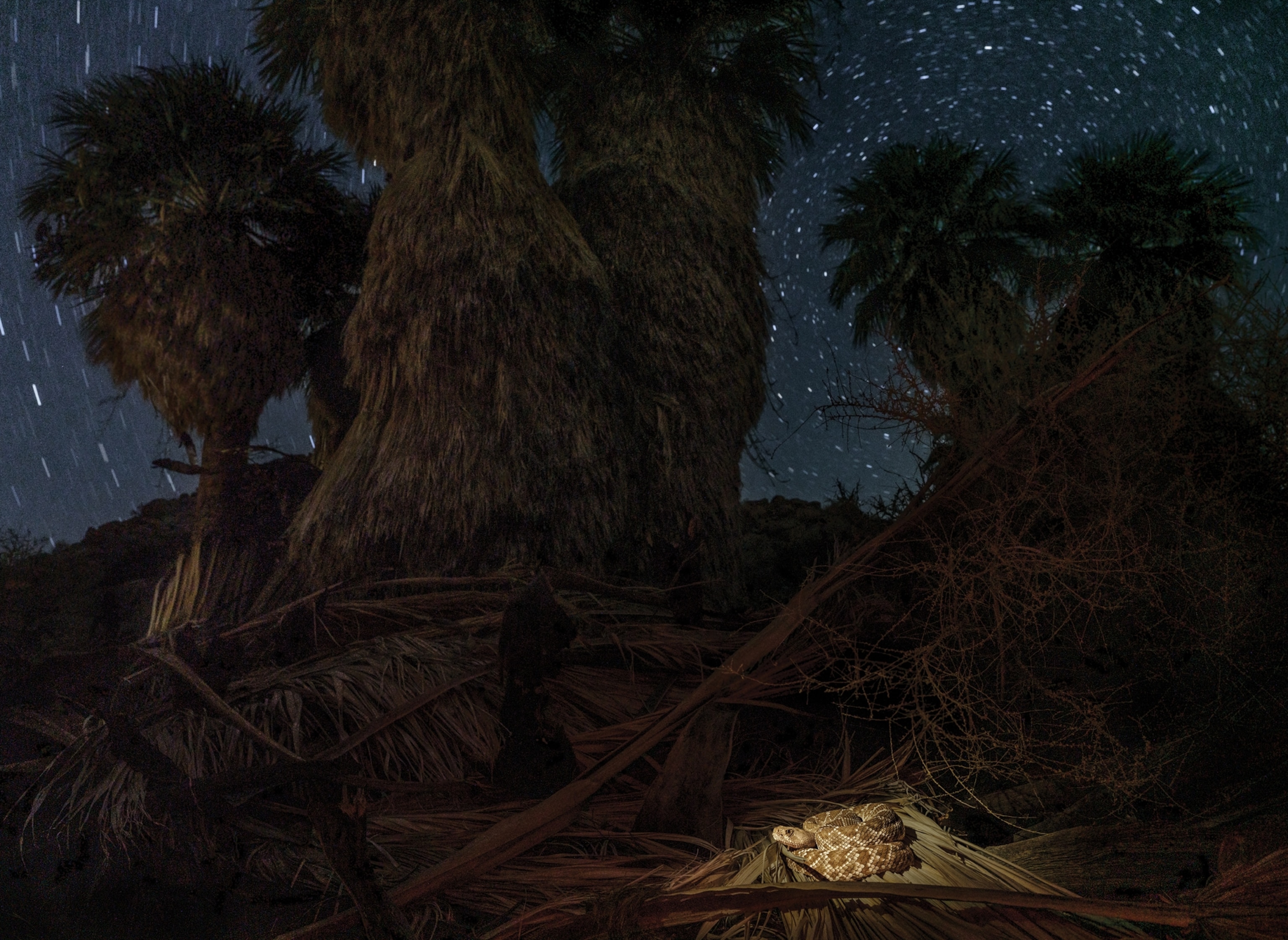
I wander the dirt-floored coliseum. The massed snakes look beaten down, stressed, possibly injured. If the roundup is all about education—teaching the public that western diamondbacks retreat from threats, hiss and rattle in warning, strike enemies only as a last option, bite nonvenomously 25 percent of the time, and are relatively easy to avoid—why continue to stoke fear that results in mass slaughter?
According to the Centers for Disease Control and Prevention, nationwide an average of five people a year die from venomous snake and lizard bites. While some snake hunters claim to be protecting livestock, which abound in west-central Texas, “it’s very rare to see cattle bitten by rattlesnakes,” says veterinarian Bud Alldredge, Jr., who’s been practicing in Sweetwater for 55 years, and bites are unlikely to be fatal. What explains the roundup’s persistence? The money, yes. But as Morehead State University philosophy professor Jack Weir put it in a case study published by the journal Conservation Biology, roundups are a way of continuing “the excitement and adventure of the cowboy saga, proving one’s manhood, and identifying with the local ethos.” Though published in 1992, Weir’s thesis appears to hold true today.
I ask Jaycee President Jimmy Hendrix if his organization would consider switching to no-kill shows, as a few other roundups have. “To each his own,” he answers. “I understand people’s point that, yeah, we’re killing rattlesnakes, but that’s certainly not what we’d want to make a priority. It’s what economically works for us.”
“Do you think you’d get such a big crowd if you didn’t kill the snakes?”
“I don’t know,” he says.
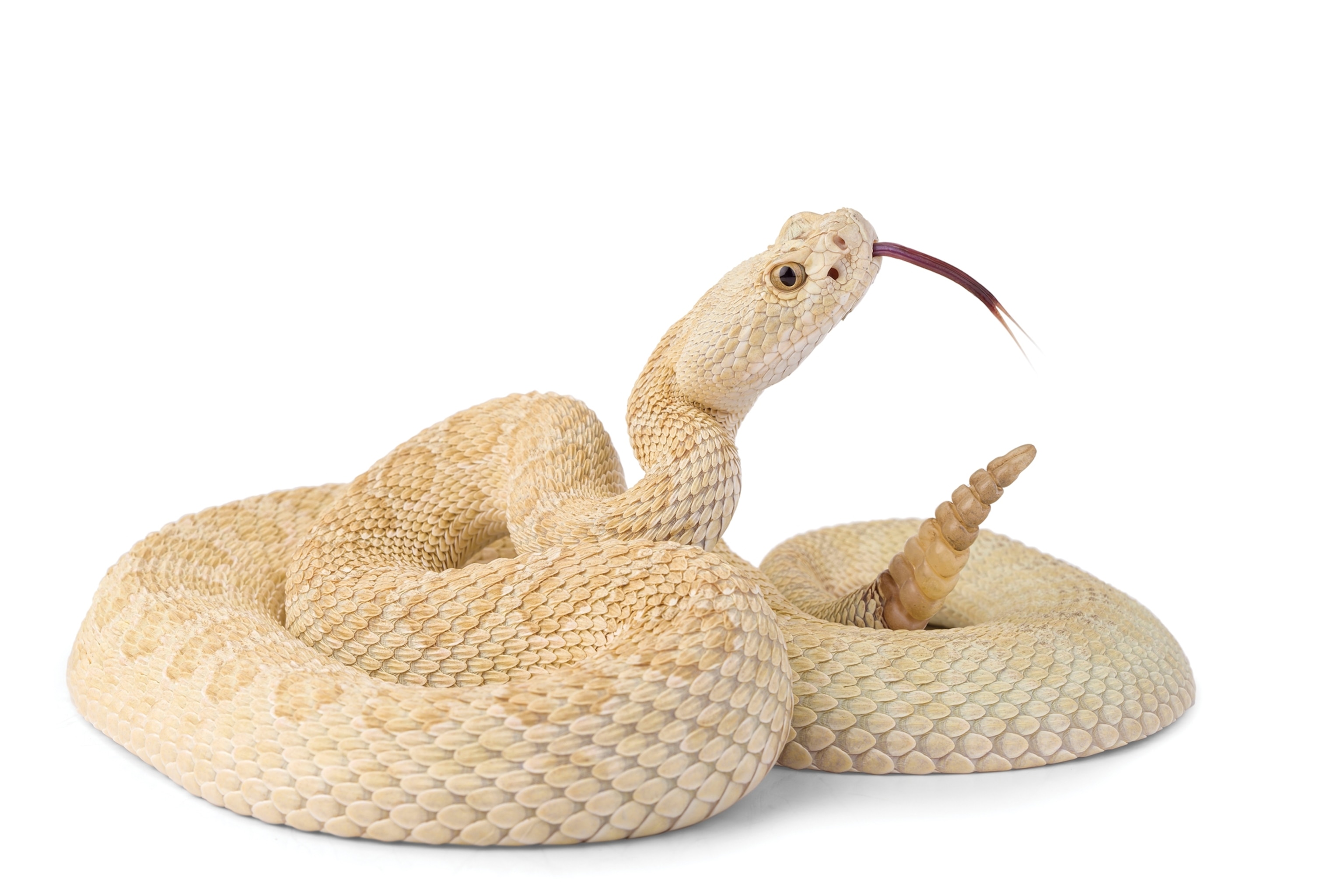

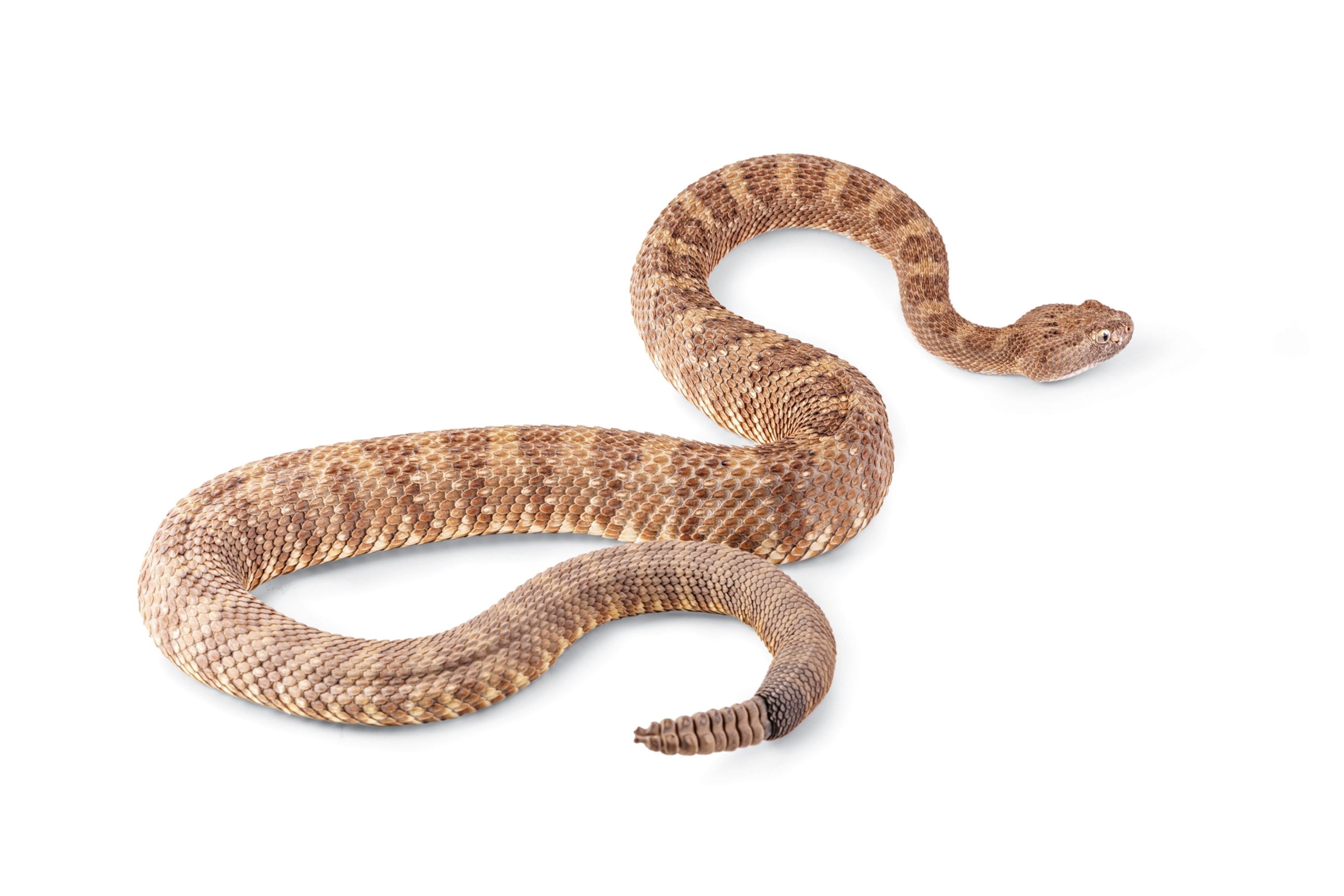
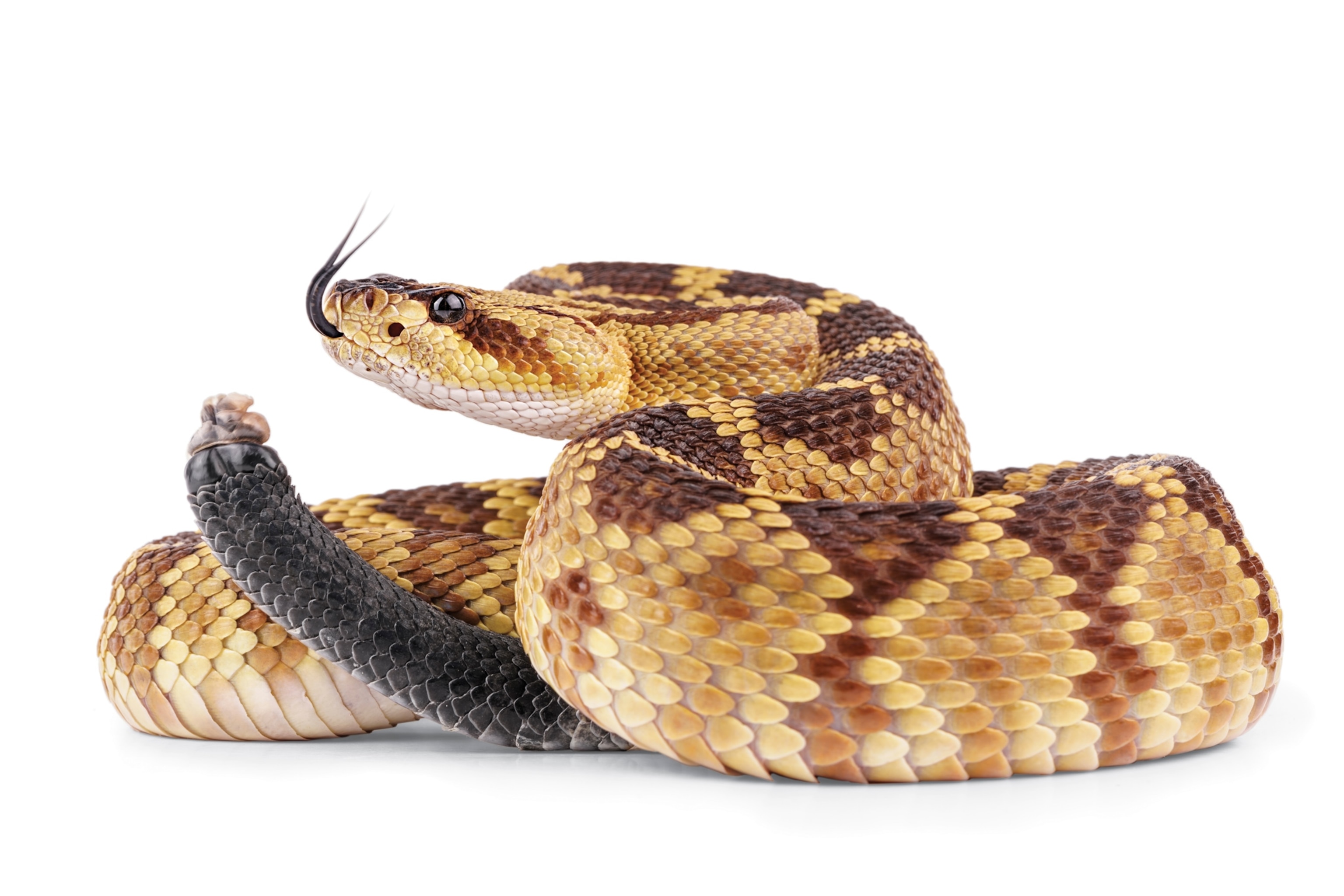
Western diamondbacks, which breed at a relatively young age, are not endangered in Texas, though the state’s Parks & Wildlife Department acknowledges it doesn’t “have any data from any specific populations anywhere in the state.” Since 1958, hunters have delivered unto the Sweetwater Jaycees more than 350,000 pounds of snakes—equivalent to about 70,000 rattlers.
At a time when populations of animal species globally have declined by an average of nearly 70 percent, wanton disregard for life—in the absence of imminent threat to humans—bothers Texas A&M University herpetologist Lee Fitzgerald. “The roundups do send a twisted message,” he says. “They’re not helping the way we think about biodiversity. We care about polar bears, but these snakes are worthless?”
Back home, I try to forget what I’d seen in the skinning pit and focus on that afternoon on Hawk Mountain, where Tom LaDuke and I had contemplated over half a dozen gestating or postpartum timber rattlers—large and peaceful, vital and venomous—as they’d glided in and out of the sun.
Pennsylvania counties used to host their own Sweetwater-style rattlesnake roundups, LaDuke had told me. The festivals were hard to stamp out because they funded fire departments. But eventually, the state Fish and Boat Commission, which regulates hunting, inaugurated a paid-permit system for live capture of rattlers and used the proceeds to fund community works.
“They recruited old snake hunters to survey populations,” LaDuke said. They asked them for data, tagged the snakes at roundups, then returned them to their capture sites. As the population recovered, rattlers were removed from the state’s endangered species candidate list.
Nodding toward visitors toting binoculars along the Hawk Mountain ridgeline, LaDuke had asked, rhetorically, why herpers—or at least those board flippers and tail grabbers notching “likes” on social media—couldn’t be more like birders: “Couldn’t they count but not capture?” I recalled that Hawk Mountain, before being set aside as a bird refuge, was a popular site for shooting goshawks, which carried a five-dollar bounty. (Goshawks prey on game animals such as rabbits, grouse, and ducks.)
So maybe there was hope. “It’s a mental shift,” LaDuke said. First you’re a hunter, then an illegal poacher, and then—with a little bit of education—you’re someone who helps another species survive.
Elizabeth Royte’s previous rattlesnake encounters involved cautiously navigating around them on hikes. Until this feature, “I never before had the luxury of closely observing these animals with an expert.”




